Turnaround in the economy
According to the DNB business cycle indicator, the low point of the economic cycle has been reached, after which economic growth will pick up gradually and at a moderate pace this year.
Read more Turnaround in the economyYou are using an outdated browser. DNB.nl works best with:
Published: 14 December 2020
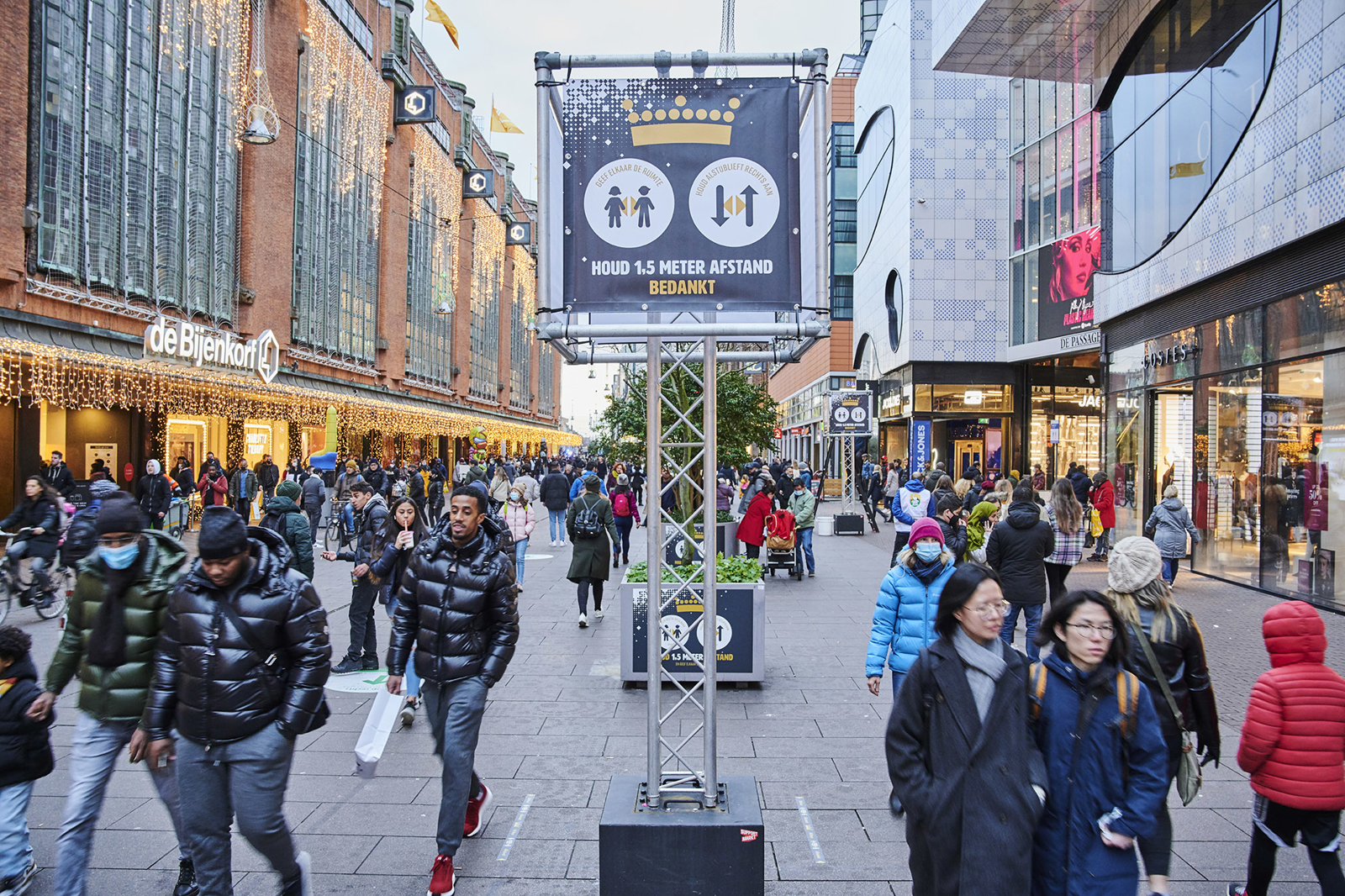
In the first two quarters of 2020, the COVID-19 pandemic dealt the Dutch economy a severe blow. However, much of the loss in gross domestic product (GDP) was recovered in the third quarter. The second wave of infections will send GDP back into negative territory. Nevertheless, the economic downturn will be limited to 4.3% in 2020. Although unprecedented, this contraction is less severe than previously feared. Gradual recovery will set in as GDP expands by almost 3% per annum in both 2021 and 2022. This is evident from the new half-yearly projections in the Economic Developments and Outlook, which De Nederlandsche Bank (DNB) published today. Given the greater-than-usual uncertainty surrounding our projections, we have prepared a mild and a severe scenario in addition to the baseline projection.
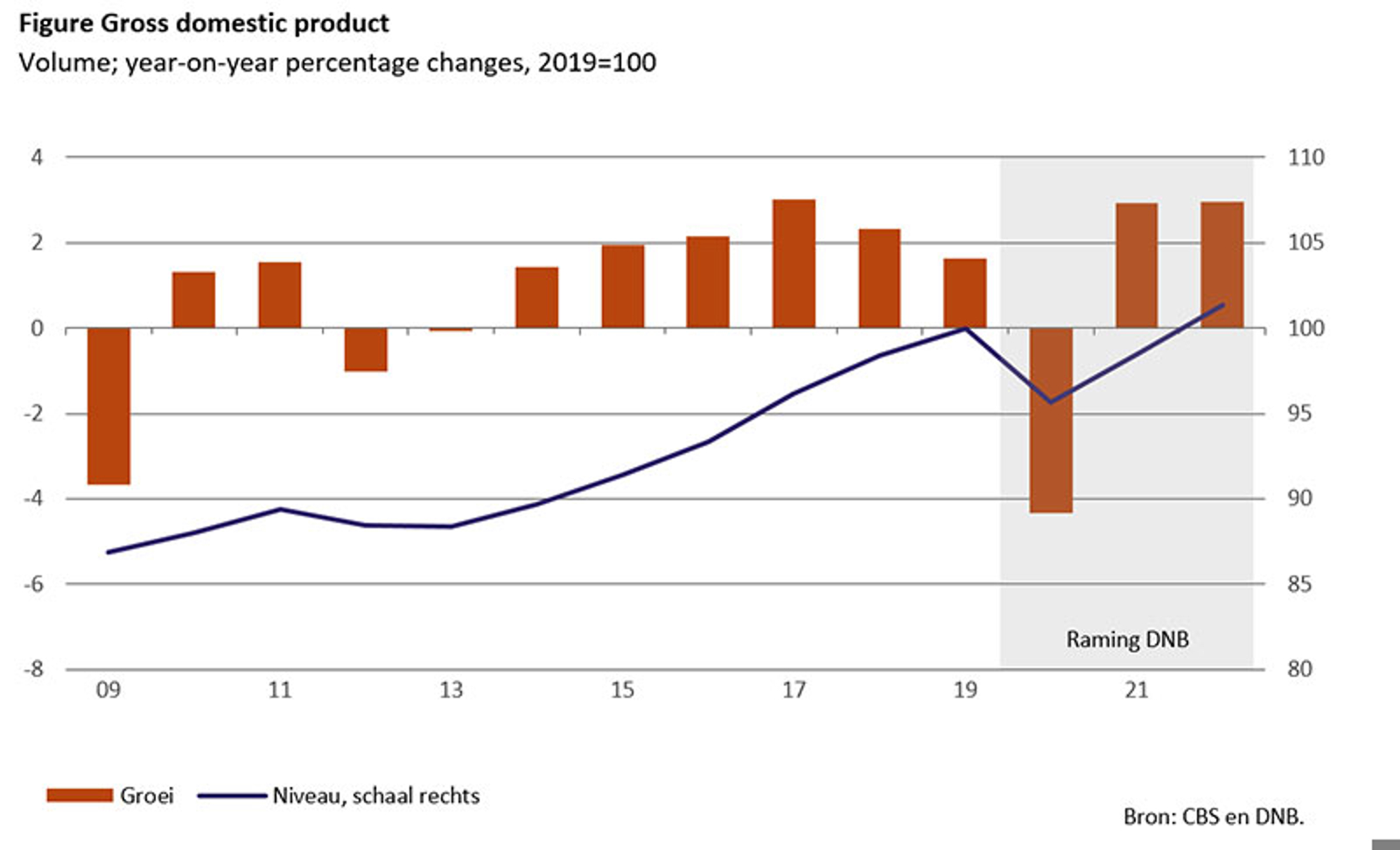
Employment is being hit hard in 2020, and will be even more so in 2021. Unemployment is expected to rise to an average of 4.0% of the labour force this year and peak at an average of 6.5% in 2021. It will subsequently edge down to 6.0% in 2022. HICP inflation, which has been above the euro area average for some time in the Netherlands, should inch up from 1.2% in 2020 to 1.5% in the next two years.
The economic downturn and extensive public support swings the general government budget balance from a comfortable surplus of 1.7% of GDP in 2019 to a deficit of 6.3% of GDP in 2020. The Dutch government will remain in deficit in 2021 and 2022. Following a sharp 10.5 percentage point increase in 2020, the debt-to-GDP ratio will gradually rise further in subsequent years, to reach 61% at year-end 2022. While substantial, the worsening of public finances will remain within economically acceptable limits.
Macroeconomic uncertainty margins surrounding our baseline projection are greater than usual as it remains unclear how the pandemic plays out and what will be possible in medical terms. Scenarios can be helpful in such situations. We therefore decided, as in the Economic Developments and Outlook for June 2020, to prepare forecasts under two alternative scenarios in addition to the baseline scenario. They differ in terms of the economic ramifications of the COVID-19 pandemic. GDP growth in 2021 will range between 4.9% in the mild scenario to 0.2% in the severe scenario.
Lastly, we also analysed the impact on the Dutch banking sector in the severe scenario and an additional, extremely severe, scenario. This shows that the average capital position of the six largest Dutch banks decreases by around two percentage points at year-end 2022 in the severe scenario. In the extremely severe scenario, the decrease amounts to almost four percentage points. While this represents a significant impact, it seems to be manageable for banks, without any serious implications for lending to firms and households. Moreover, the impact is smaller than in June 2020, as the economic outlook has been upwardly adjusted.
For further information, please contact Bouke Bergsma by telephone at +31 20 524 3797 or +31 653 258 400.
Economic Developments and Outlook – December 2020

According to the DNB business cycle indicator, the low point of the economic cycle has been reached, after which economic growth will pick up gradually and at a moderate pace this year.
Read more Turnaround in the economy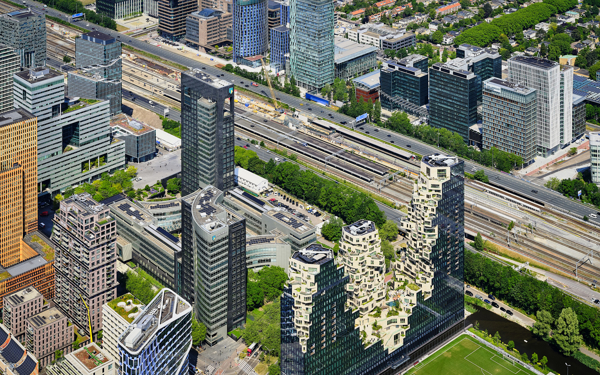
In the fourth quarter of 2023, foreign multinationals transferred over €300 billion in conduit activities from the Netherlands abroad. These relocations indicate adjustments in business structures, and may be due to the introduction this year of a minimum tax for these international companies.
Read more Conduit activities in the Netherlands declined in fourth quarter of 2023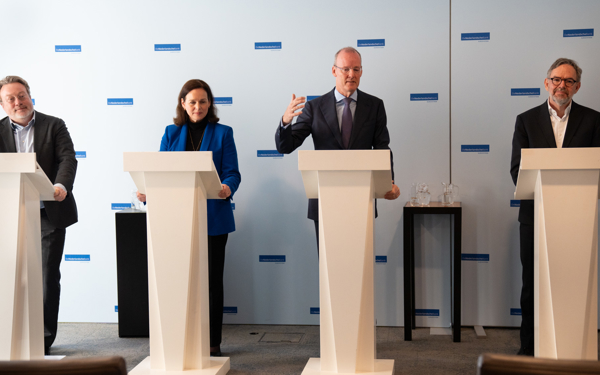
The Dutch economy is strong and resilient, but not everyone in the Netherlands experiences it that way. Many people are struggling financially or have concerns about their future. The Netherlands should therefore strive for a highly developed and finely tuned economy that works better for everyone.
Read more Towards an economy that works better for everyone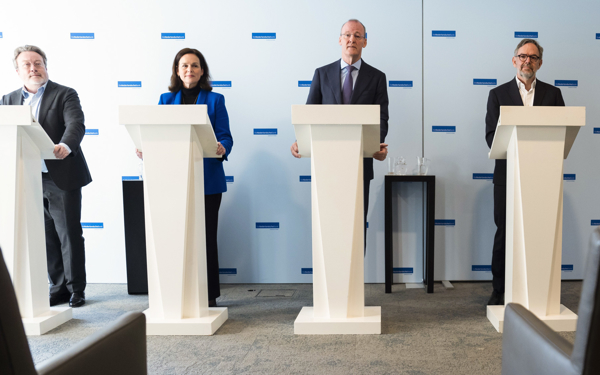
“We see that while the Dutch economy is doing quite well, it is not working well enough for some groups in society.” Klaas Knot said this at the presentation of DNB’s 2023 Annual Report.
Read more Introductory remarks upon the presentation of the 2023 annual reportWe use cookies to optimise the user-friendliness of our website.
Read more about the cookies we use and the data they collect in our cookie notice.